'Oumuamua: The Solar System's 1st Interstellar Visitor Explained in Photos
First interstellar visitor in the solar system
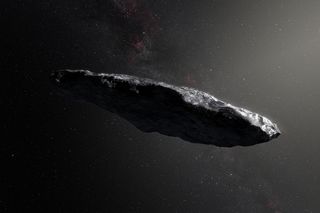
Meet 'Oumuamua: 1I/2017 U1, the first known interstellar object observed within our solar system. Its name means "a messenger from afar arriving first" in Hawaiian. 'Oumuamua was first detected on Oct. 19, 2017, by astronomers using the Pan-STARRS1 telescope in Hawaii. Here: an artist's impression of the asteroid 'Oumuamua.
Up First: A slender space rock
A strange, skinny space rock

'Oumuamua is a strange asteroid that appears to be dark-red in color and highly elongated. The metallic or rocky object measures about one-quarter of a mile (0.4 kilometers) long. Follow-up observations from observatories around the world revealed that this unique object traveled through space for millions of years before it stumbled upon our star system.
Up Next: Zipping through the stars
Zipping through the stars
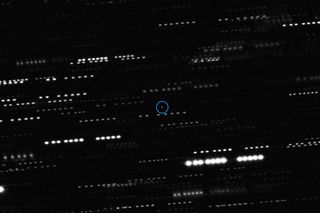
The interstellar asteroid 'Oumuamua (circled in blue) is pictured amid faint stars that appeared to smear as the telescopes tracked the moving asteroid. This image combines multiple views of 'Oumuamua from the European Southern Observatory's Very Large Telescope and the Gemini South telescope in Chile.
Up Next: 'Oumuamua stumbles upon the solar system
'Oumuamua stumbles upon the solar system
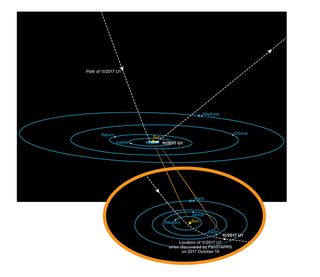
This diagram shows the orbit of the interstellar asteroid 'Oumuamua as it passes through the solar system. While all asteroids and comets observed before 'Oumuamua have been bound in their orbits by the sun's gravity, this weird space rock is not gravitationally bound. It will return to interstellar space after its brief encounter with our star system.
Up Next: A tiny speck in space
A tiny speck in space
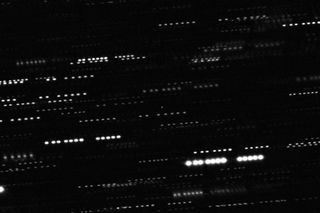
This very deep combined image shows the interstellar asteroid 'Oumuamua at the center of the picture. It is surrounded by trails of faint stars that are smeared as the telescopes tracked the moving asteroid. This image was created by combining multiple images from ESO’s Very Large Telescope as well as the Gemini South telescope. The object appears to be a point source, with no surrounding dust.
Up Next: Seeing light from 'Oumuamua
Seeing the light

This plot of 'Oumuamua's light curve shows how the interstellar asteroid varied in brightness during three days in October. The large range of brightness — about a factor of 10 (2.5 magnitudes) — is caused by the space rock's elongated body, which rotates once every 7.3 hours, ESO officials said in a statement. The colored dots represent measurements through different filters, covering light in different parts of the visible and near-infrared spectrum.
Up Next: Sweeping around the sun
Sweeping around the sun

The interstellar object 1I/2017 U1 ('Oumuamua), previously known as C/2017 U1 (PANSTARRS) and A/2017 U1, was closest to the sun on Sept. 9, 2017. Traveling at about 98,400 mph (158,360 km/h), 'Oumuamua is headed away from the Earth and sun, and is on its way out of the solar system.
Up Next: Watch 'Oumuamua go!
Watch 'Oumuamua go!

This NASA animation shows the path 'Oumuamua — an object likely to be of interstellar origin — through the inner solar system. 'Oumuamua made its closest approach to the sun on Sept. 9 and is now zooming away at 97,200 mph (156,400 km/h) relative to the sun.
Up Next: An interstellar interloper
An interstellar interloper
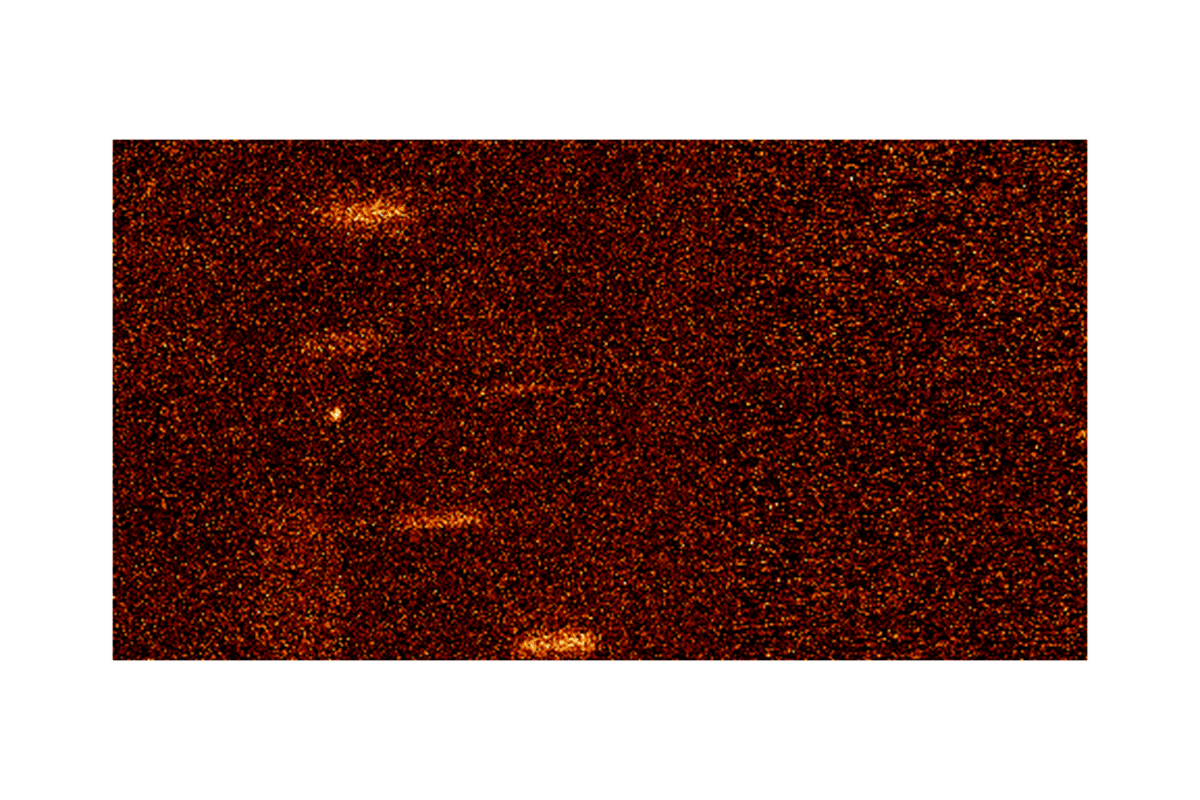
Images of 'Oumuamua were captured on Oct. 27 by the 3.5-meter WIYN Telescope on Kitt Peak in Arizona. These first images confirmed that the object doesn't have a coma — the cloud of dust and gas that fizzes from a comet as it approaches the sun — and is therefore an irregularly shaped asteroid.
Join our Space Forums to keep talking space on the latest missions, night sky and more! And if you have a news tip, correction or comment, let us know at: community@space.com.
Get the Space.com Newsletter
Breaking space news, the latest updates on rocket launches, skywatching events and more!

Hanneke Weitering is a multimedia journalist in the Pacific Northwest reporting on the future of aviation at FutureFlight.aero and Aviation International News and was previously the Editor for Spaceflight and Astronomy news here at Space.com. As an editor with over 10 years of experience in science journalism she has previously written for Scholastic Classroom Magazines, MedPage Today and The Joint Institute for Computational Sciences at Oak Ridge National Laboratory. After studying physics at the University of Tennessee in her hometown of Knoxville, she earned her graduate degree in Science, Health and Environmental Reporting (SHERP) from New York University. Hanneke joined the Space.com team in 2016 as a staff writer and producer, covering topics including spaceflight and astronomy. She currently lives in Seattle, home of the Space Needle, with her cat and two snakes. In her spare time, Hanneke enjoys exploring the Rocky Mountains, basking in nature and looking for dark skies to gaze at the cosmos.
